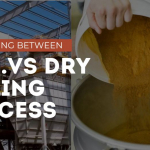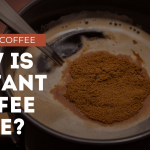In the diverse world of coffee, classification can be approached from multiple angles—brewing methods, roast levels, or preparation styles. However, to truly understand coffee at its most fundamental level, we need to examine the distinct coffee species that form the foundation of every cup. This comprehensive guide focuses on the four main commercial coffee types: Arabica, Robusta, Liberica, and Excelsa. Each brings its own unique characteristics to your cup, influencing flavor, growing conditions, and commercial applications.
Arabica Coffee (Coffea arabica): The Premium Standard
Arabica coffee reigns supreme in the specialty coffee world, accounting for approximately 60-70% of global coffee production. Its popularity stems from its nuanced flavor profile and aromatic complexity.
Flavor Profile and Characteristics
Arabica beans produce coffee with a sweeter, more complex taste than other varieties. Depending on the growing region, you might detect:
- Fruity and berry notes
- Caramel and chocolate undertones
- Floral aromatics
- Wine-like acidity
- Smooth, clean finish with minimal bitterness
The beans themselves are relatively large, oval-shaped, and feature a distinctive S-shaped center cut.
Growing Conditions and Regions
Arabica plants are notoriously finicky, requiring specific conditions to thrive:
- High altitudes (generally 2,000-6,500 feet above sea level)
- Steady temperatures between 60-75°F (15-24°C)
- Well-defined rainy and dry seasons
- Rich, well-draining soil
- Shade coverage
These demanding requirements explain why countries like Colombia, Ethiopia, Guatemala, and parts of Brazil have become renowned Arabica producers. The high elevation and specific climate create the ideal environment for developing complex flavors.
Popular Varieties and Cultivars
Within Arabica coffee, numerous varieties exhibit distinct characteristics:
- Typica: The original Arabica variety with classic flavor notes
- Bourbon: Known for its sweet, complex profile with caramel notes
- Geisha/Gesha: Highly prized for its tea-like body and floral, jasmine notes
- SL-28 and SL-34: Kenyan varieties celebrated for their bright acidity and blackcurrant notes
- Pacamara: Large beans with unique flavor combinations
Premium Pricing Explained
Arabica’s complexity comes at a cost—the plants produce fewer cherries, are more susceptible to disease, and require more careful handling. These factors, combined with the superior taste profile, explain why Arabica commands premium prices in the coffee market.
Robusta Coffee (Coffea canephora): The Bold Workhorse
Robusta accounts for approximately 30-40% of global coffee production and serves as the backbone of many commercial coffee products.
Distinctive Taste and Caffeine Content
Compared to Arabica, Robusta offers:
- A stronger, more robust flavor (as the name suggests)
- Pronounced bitterness
- Earthy, woody, and sometimes rubber-like notes
- Less acidity
- Higher caffeine content (nearly double that of Arabica)
- Fuller body and pronounced grain-like aftertaste
The beans are smaller, rounder, and more pale than Arabica, with a straight center cut.
Cultivation Requirements and Regions
Robusta’s popularity among farmers stems from its hardiness:
- Thrives at lower altitudes (sea level to 2,000 feet)
- Tolerates warmer temperatures and inconsistent rainfall
- Resistant to many diseases and pests
- Higher yield per plant
- Less demanding growing conditions
Vietnam leads Robusta production globally, followed by Brazil, Indonesia, and Uganda. The plant’s resilience makes it ideal for regions where Arabica might struggle.
Common Commercial Applications
Robusta’s distinctive characteristics make it valuable for specific uses:
- Essential component in traditional Italian espresso blends (adding crema and body)
- Primary ingredient in most instant coffee products
- Used to add strength and caffeine to coffee blends
- Popular in regions where strong, bitter coffee is traditionally preferred
- Cost-effective option for commercial coffee products
Price Points
Robusta typically sells for 60-70% of the price of Arabica beans, making it an economical choice for mass-market products and blends where cost is a consideration.
Liberica Coffee (Coffea liberica): The Rare Giant
Liberica represents a tiny fraction of global coffee production—less than 2%—yet offers a truly distinctive coffee experience.
Unique Physical Characteristics and Flavor Notes
Liberica is immediately recognizable by its:
- Exceptionally large beans (the largest of all coffee species)
- Asymmetrical shape with an irregular curve
- Unique hook-like extension at one end
- Intense aroma that’s often described as floral and fruity
- Flavor notes of dark chocolate, woody undertones, and sometimes smoky characteristics
- Full body with minimal acidity
Rarity and Historical Significance
Liberica gained prominence during the coffee leaf rust epidemic of the 1890s when it was resistant to the disease that devastated Arabica crops. Though it briefly became an important commercial crop, it eventually fell out of favor as Arabica production recovered.
Growing Regions and Availability
Today, Liberica is primarily grown in:
- The Philippines (particularly the Batangas region)
- Malaysia
- Indonesia
- Limited parts of West Africa
Its scarcity makes it difficult to find outside these regions, though specialty coffee importers occasionally offer Liberica as a novelty coffee experience.
Excelsa Coffee (Coffea excelsa or Coffea liberica var. dewevrei): The Mysterious Fourth
Though taxonomically reclassified as a variety of Liberica in 2006, Excelsa continues to be recognized by coffee professionals as distinct enough to warrant its own category.
Flavor Profile and Distinctive Qualities
Excelsa offers a truly unique tasting experience:
- Combines light roast and dark roast characteristics simultaneously
- Tart, fruity notes with a mysterious depth
- Complex middle and back palate sensations
- Dark, mysterious undertones with bright fruit highlights
- Distinctive aroma profile unlike other coffee species
Growing Regions and Conditions
Excelsa thrives in similar conditions to Liberica but is even more geographically limited:
- Primarily found in Southeast Asia
- Grows on large, vigorous trees reaching 20-30 feet tall
- Requires specific soil conditions and climate
- Produces relatively low yields compared to Arabica and Robusta
Limited Availability and Specialty Status
Excelsa represents less than 1% of global coffee production, making it a true specialty product. It’s rarely found as a single-origin offering but is occasionally incorporated into blends to add complexity and unique flavor notes.
Comparing the Four Coffee Types
| Characteristic | Arabica | Robusta | Liberica | Excelsa |
|---|---|---|---|---|
| Bean Shape | Oval with S-shaped center cut | Round with straight center cut | Large, asymmetrical with hook-like extension | Similar to Liberica but smaller |
| Flavor Profile | Sweet, complex, fruity, wine-like acidity | Strong, bitter, earthy, woody | Woody, smoky, floral, fruity | Tart, fruity, complex depth |
| Caffeine Content | 0.9-1.5% | 1.7-4.0% | 1.2-1.5% | 1.0-1.5% |
| Growing Difficulty | High (susceptible to disease) | Low (hardy) | Medium | Medium-High |
| Global Production | 60-70% | 30-40% | <2% | <1% |
| Price Point | Premium | Economical | Very high (when available) | Very high (when available) |
Commercial Applications and Consumer Guidance
How These Coffee Types Are Used
Single-Origin Offerings:
- Arabica dominates the single-origin specialty market
- High-quality Robusta occasionally appears as single-origin
- Liberica and Excelsa are rarely found as pure single-origin offerings
Commercial Blends:
- Specialty blends often use multiple Arabica varieties
- Commercial blends frequently combine Arabica and Robusta
- Liberica or Excelsa may be added in small amounts for unique flavor notes
Brewing Methods:
- Arabica: Excels in pour-over, drip, and gentle brewing methods
- Robusta: Shines in espresso, Moka pot, and strong brewing styles
- Liberica/Excelsa: Best in full-immersion methods to showcase unique characteristics
Identifying Coffee Types on Packaging
When shopping for coffee, look for:
- Direct labeling: Premium coffees often specify the species and even variety
- Origin information: Certain regions exclusively produce specific coffee types
- Price point: Significantly lower prices often indicate Robusta content
- Flavor descriptions: Tasting notes can provide clues about the coffee species
For the most comprehensive coffee experience, consider exploring all four types to develop a deeper appreciation for coffee’s remarkable diversity.




